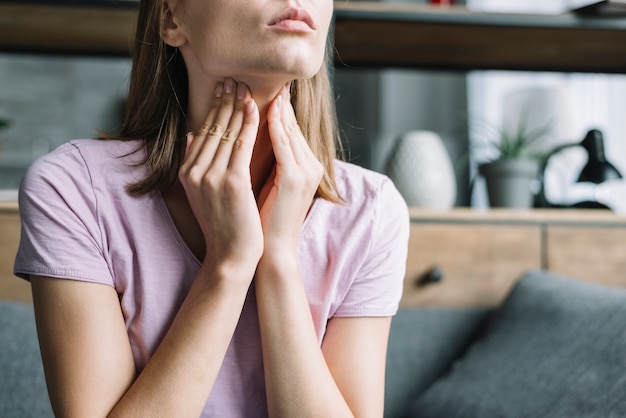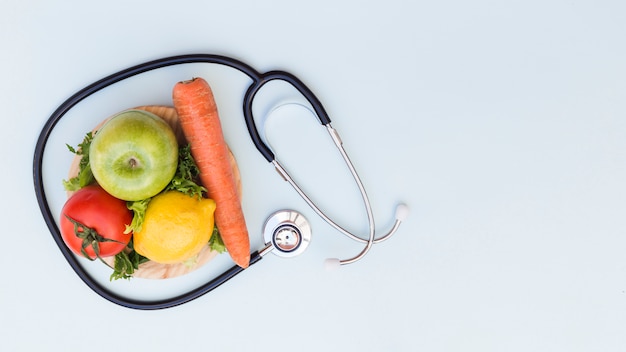Hypothyroidism
- The thyroid gland is one of the important glands of the endocrine system.
- The thyroid is a small, butterfly-shaped gland in the front of your neck.
- It releases thyroid hormones (thyroxine (T4) and triiodothyronine (T3))
- These hormones help to regulate metabolism, growth, and development of the human body.
- It helps to regulate many body functions like brain and nerve function and development, and function of the skin, hair, eyes, heart, and intestines
- Without enough thyroid hormones, many of your body’s functions slow down.
- Hypothyroid is a condition in which the thyroid gland does not produce a sufficient amount of the thyroid hormone.
Cause of Hypothyroidism
Hypothyroidism can be caused due to multiple reasons most common causes are
- Hashimoto's disease, an autoimmune disorder where your immune system attacks your thyroid.
- Iodine deficiency
- Radiation or surgery on the thyroid gland,
- Stress
- Thyroiditis
- A side effect of medication
- Pregnancy
- Ayurveda considers hypothyroidism as a state of improper function of Agni (digestive power) and aggravated Kapha and Vata Dosha.
- Although there is no direct reference of Hypothyroidism in Ayurveda, because in Ayurveda principle of naming disease is based on Prakriti (constitution) and site of manifestation, sign, and symptom of disease, causative factor of disease, etc. so Ayurvedic Samhita has a description of swelling of the thyroid gland called Galganda.
- The thyroid gland is situated in the neck a region which is the place of kapha dosha so in Samhitas it includes in kaphaj nanatmaj vikar (a disease caused by aggravated kapha).
- The main action of the thyroid hormone is to regulate body metabolism at the cellular level. In Ayurveda, it can be correlated with the actions of Agni. In Ayurveda, Agni is (digestive fire) is responsible for digestion and absorption of food
Common Symptoms
Hypothyroidism symptoms caused by aggravated Kapha dosha
- Increased body weight
- Increase Sensitivity to cold
- Physical and mental sluggishness
- Forgetfulness
- Increased cholesterol level
- Enlarged thyroid
- Dry hair, skin, and brittle nail
- Constipation
- Irregular heartbeat
- Muscle aches and pain
- Irregular and/or painful period
It is Agni alone represented by Pitta
- Improper digestion
Ayurvedic Standard Treatment Guidelines Hypothyroidism
- Nidan Parivarjan
- Shamana Chikitsa
- Shodhana Chikitsa
- External applications
- Rasayana Chikitsa
- Aahar and Vihar
Nidana Parivarjana (avoid the known disease-causing factors)
- First, as Ayurveda works to eliminate the root cause of the disease so this should be the first line of treatment
- Diet is one of the main pillars of health, and herbs cannot be effective for a patient who does not follow a strict regimen of diet.
- One should eat foods that are suitable to their Prakruti and those that will balance Vata-Kapha Vikruti while eliminating ama, (ama is indigested food because of this body is no longer absorb essential nutrients).
Shamana Chikitsa
It involves1. Agnideepana (stimulation of the digestion and metabolism)
2. Pachana (digestion)
3. Vatanulomana (proper regulation of excretory system)
Medication
All medication for hypothyroidism needs to be taken under the supervision of an ayurvedic physician
- Kanchnar Gugulu
- Varunadi Kashayam
- Aswagandharista (major composition as Withania Somnifera),
- Shigru Patra Kwatha
- Brahmi
- Triphala (a combination of three herbs Emblica Officinalis, Terminalia Chebula and Terminalia Bellirica),
- Chandraprabha Vati (Commiphora Mukul as major composition).
- Trikatu
Shodhana Chikitsa (cleansing of the macro and microchannels)
It is essential to clear the blocked channels and eliminate aggravated Doshas.- Vamana,
- Virechana
- Basti,
- Nasya Therapy.
- Shirodhara
External applications – Lepa (paste apply on affected area)
Adopt a healthy diet & lifestyle so here Some specific guidelines as to what foods to eat and avoid, pacifying the aggravating dosha,
Rasayana Chikitsa
- After the elimination of imbalance doshas and stimulation of Agni, Rasayana drugs are worked to balance Tridoshas and restore the metabolism of the body.
- Rasayana drugs like
- Guda Bhallatak ghee,
- milk decoction of garlic,
- Shilajatu, are best for rejuvenation of the body in hypothyroidism.
Adopt a healthy diet & lifestyle so here Some specific guidelines as to what foods to eat and avoid, pacifying the aggravating dosha,
- Cereals
- whole grains barley brown rice quinoa
- Avoid- white rice bread soya flor
- Pulses
- All pulses good
- Avoid- soybean-based product
- Vegetables
- Capsicum carrot,cucumber pumpkin, , peas, okra, fenugreek leaves, onion,garlic coriander leaves
- Avoid- (broccoli ,sweet potato, cabbage, sprout ,cauliflower ,soya( Goitergen vegetables)
- Fruits
- All fruits can be taken
- Dairy
- Low-fat milk and low-fat yogurt
- Avoid Whole milk, cheese, soya milk
- Nuts or dry fruits
- Flaxseed ,chia seed ,almond, brazil nut
- Avoid Cashew nut, peanut, raisin, walnut
Diet charts
- Early morning-
- a glass of water with chia seed or flax seed
- Breakfast 8 am to 10 am
- Oats Upma/ vermicelli Upma with veggies, your choice of fruits and fruit juice + Idli or Poha
- Lunch 11 am to 1 pm-
- Roti brown rice or Dalia +vegetables +one cup daal +curd
- Evening snack-
- green tea + Almond
- Dinner –
- Mix flour roti +cooked vegetables
- bedtime
1cup milk with turmeric or coconut oil
The Pathya(Should be taken)
Along with medicine yoga and Pranayam also help to normalize the function of thyroid gland all forward and backward band is good for hypothyroidism
- Purana Ghrita Pana(the ghee stored in an airtight container) Jeerna Lohita shall(variety of rice, Yava(barley), Mudga(green gram), Rakta shigru(moringa oleifera or drumstick)
- Add iodized salt for hypothyroid
- Flaxseed is common in essential omega 3 fatty acids. Dose: Take one teaspoon of flaxseed powder with water regularly
- Ginger is rich in zinc, potassium, and magnesium. Ginger is a good as it has anti-inflammatory properties. Dose: Drink ginger tea or consume it in the dried form to treat hypothyroidism
- Coconut oil is a good remedy for the treatment of thyroid disorders. Coconut oil can be used as cooking oil to normalize function of the thyroid gland. Dose: Take a glass of milk and add 2 teaspoons of coconut oil and drink it every day to regulate the function of thyroid gland
- Exposure to the sun is also a good remedy for regulating the functioning of the thyroid gland. Exposure to the sun for 10-15 minutes every day it enhance a healthy immune system.
Along with medicine yoga and Pranayam also help to normalize the function of thyroid gland all forward and backward band is good for hypothyroidism
- Sarvangasana
- Matsyasan
- Bhujangasan
- Halasan





Thanks for sharing such an insightful information on thyroid. Adding diet chart along with treatment is really helpful. Waiting for more such articles on ayurveda...
ReplyDeleteReally nice information about health and ayurveda. Thanks for sharing
ReplyDeleteThanks for sharing importance about Thyroid and it impact along with how to keep it balanced.
ReplyDeleteVery informative and will certainly helps....Looking for such great posts in future.
Super
ReplyDeleteAfter a long time, I read a very beautiful and very important article that I enjoyed reading. I have found that this article has many important points. Thanks .pls visit our website Anthony Nugyen DPM
ReplyDeleteHi there to everyone, the contents present at this web page are actually amazing for people knowledge, well, you can also visit Hormone Therapy In San Antonio. Keep up the good work.
ReplyDelete